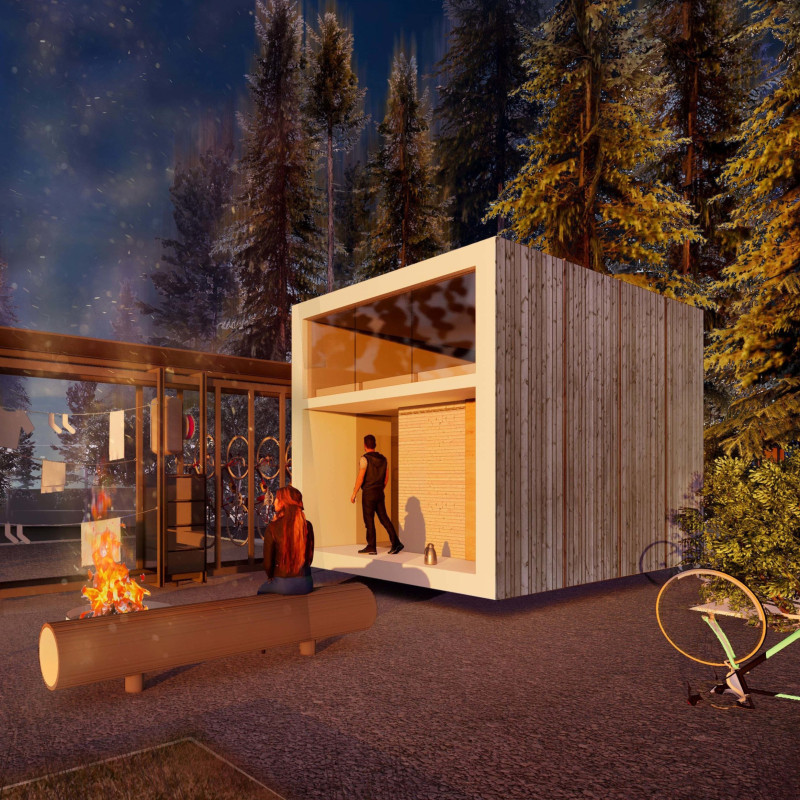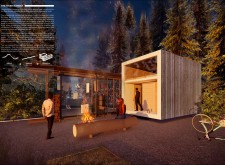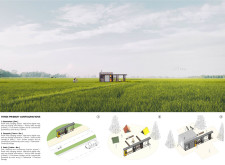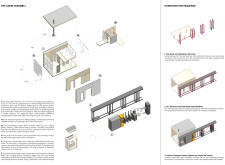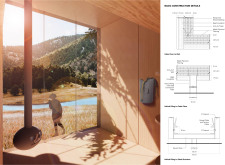5 key facts about this project
The cabin measures 3.5m x 5.5m and rises to a height of 4m, making efficient use of interior space for both living and storage purposes. It emphasizes sustainability through the use of Cross Laminated Timber (CLT) Panels and reclaimed wood cladding, which integrate into the natural landscape. Large glass windows facilitate expansive views and optimize natural light, creating a sense of openness within the compact design.
The adjacent linear structure provides essential amenities such as bike storage and solar-powered charging stations, ensuring a seamless experience for users. This functional element enables the architecture to serve as a hub for information and rest, reinforcing the connection between its users and their environment.
Materiality and Sustainability
The project stands out for its commitment to sustainable materials and energy efficiency. The use of CLT is crucial not only for structural integrity but also for its eco-friendly properties. Reclaimed wood cladding contributes to reducing waste and enhances the aesthetics of the cabin, allowing it to blend into its surroundings. The strategic use of rigid insulation ensures that the cabin remains energy-efficient throughout varying seasons.
The alignment of architectural elements contributes to minimizing site disturbance, with elements like helical piles offering a stable foundation while preserving the natural topography. Interior finishes utilize maple plywood, providing warmth and texture that complements the cabin’s overall design.
Functionality and Design Elements
The River Runner has been designed with adaptability in mind. Its split-level interior effectively organizes space into distinct areas for relaxation and practical uses, maximizing functionality without sacrificing comfort. Cross-ventilation strategies through strategically placed windows enhance air quality and thermal comfort, integrating passive cooling techniques into the architectural framework.
The linear infrastructure is configurable to accommodate diverse user needs, making it suitable for various activities such as camping, social engagement, or individual retreats. This modularity ensures that the project can serve a wide audience while promoting an inclusive environment.
The integration of both elements—the cabin and the linear infrastructure—creates a cohesive user experience that emphasizes interaction with the natural environment. The design captures moments of solitude as well as social interaction, fostering a sense of community among outdoor enthusiasts.
To further explore the architectural plans, sections, designs, and ideas that underpin the River Runner project, readers are encouraged to delve into the project presentation for more detailed insights. This exploration offers an opportunity to appreciate the thoughtful architecture and design elements that define this unique project.


